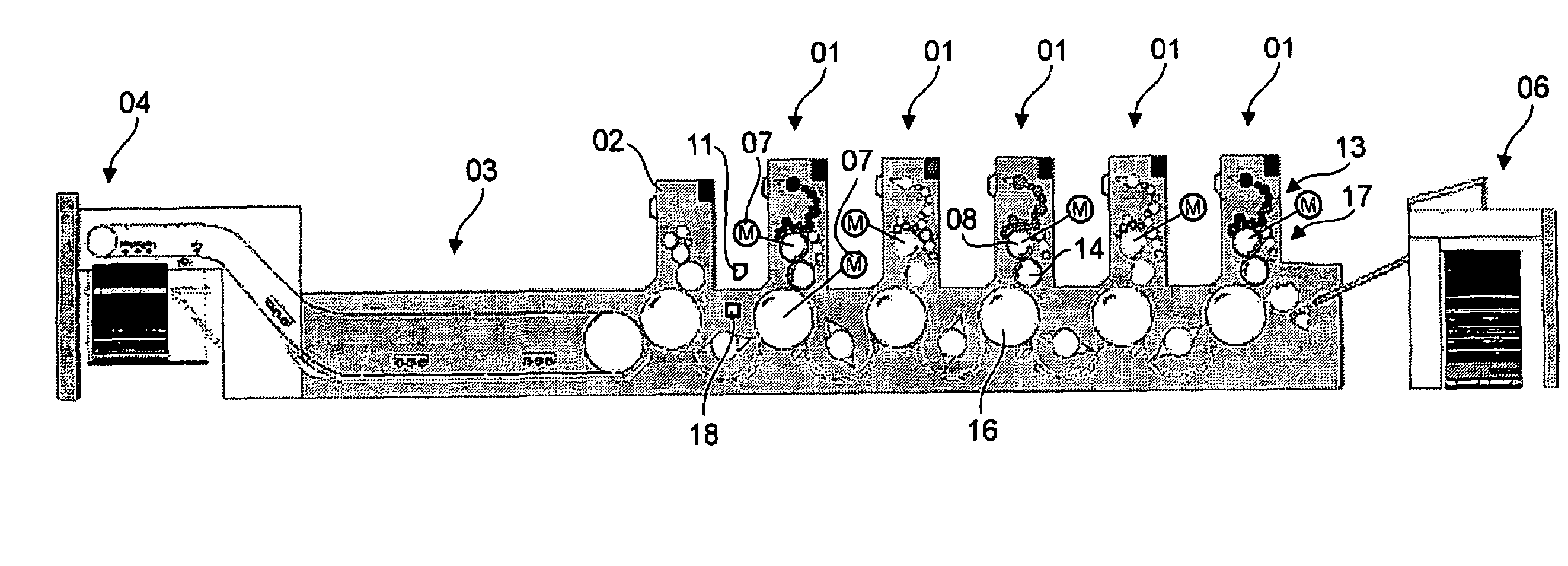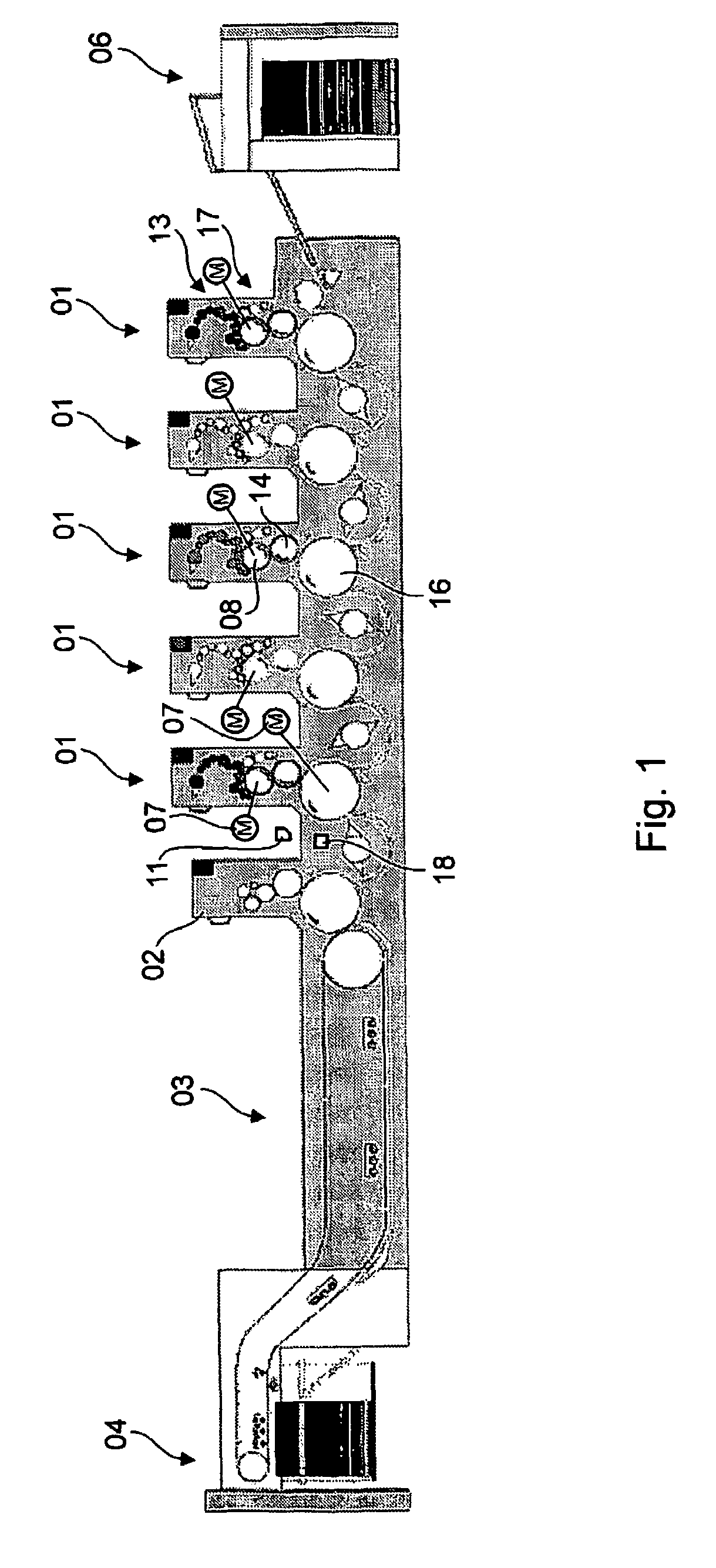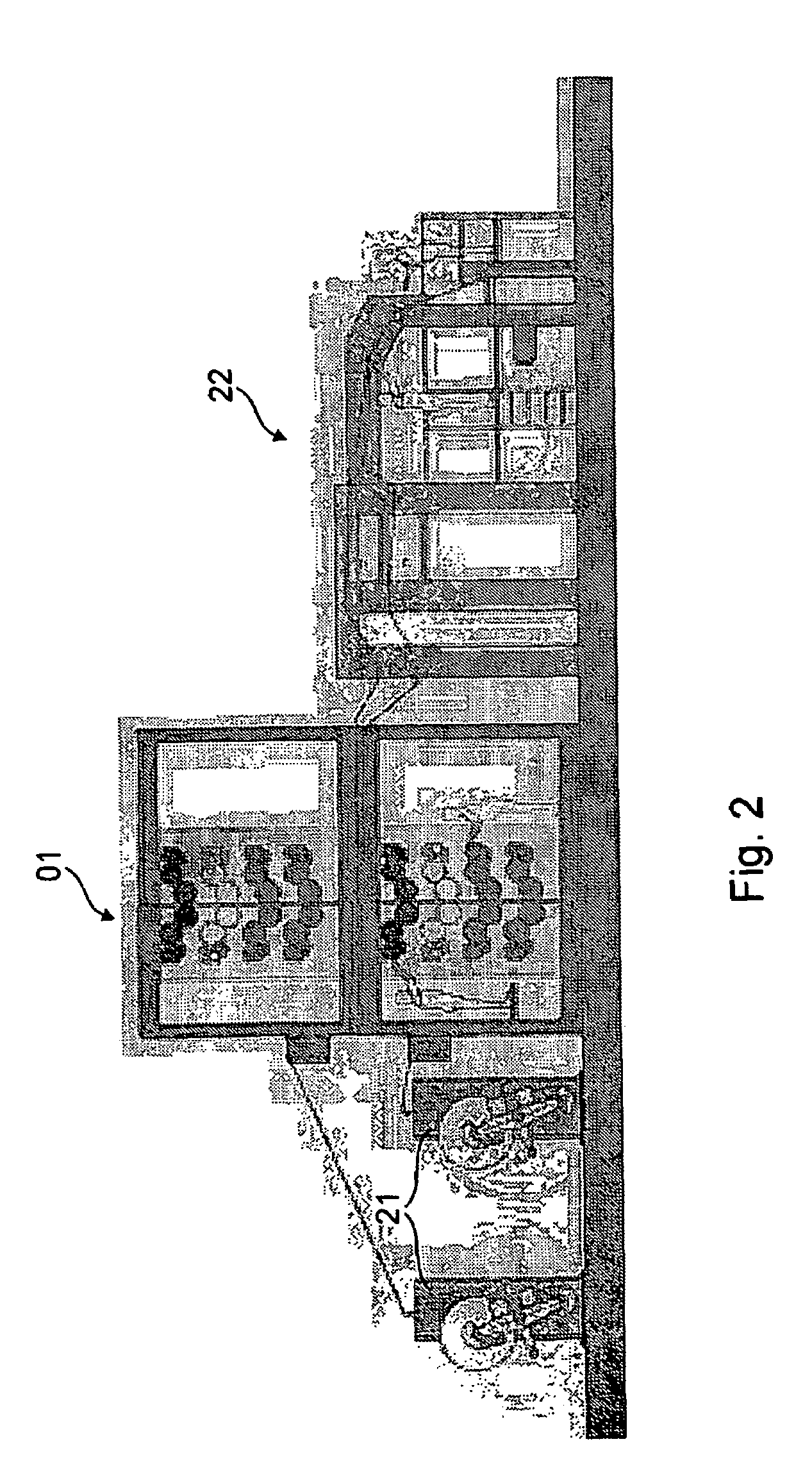Printing machines having at least one machine element that can be adjusted by a setting element
a technology of setting elements and printing machines, applied in the field of printing machines, can solve the problems of complex levels, insufficiently addressing what actually happens in practice, and forming a complex level, and achieve the effects of stable operating state, good quality, and rapid effective control
- Summary
- Abstract
- Description
- Claims
- Application Information
AI Technical Summary
Benefits of technology
Problems solved by technology
Method used
Image
Examples
Embodiment Construction
[0027]FIG. 1 shows a printing machine, which is designed by way of example as a sheet-fed printing machine. Alternatively, however, the printing machine may also be designed as a web-fed printing machine. The printing machine is designed especially as an offset printing machine. However, it may also be provided that the printing machine prints using a waterless offset printing process. The printing machine illustrated by way of example in FIG. 2 is a waterless printing machine, i.e. one that prints without the addition of a dampening agent.
[0028]The printing machine is preferably equipped with multiple printing couples 01, each of which prints on the same printing substrate with one printing ink. In the example in FIG. 1 five printing couples 01 are provided in the direction of transport of the printing substrate, arranged sequentially according to the unit construction principle. These are followed by a coating unit in the form of a tower coater 02, along with a delivery extension ...
PUM
 Login to View More
Login to View More Abstract
Description
Claims
Application Information
 Login to View More
Login to View More - R&D
- Intellectual Property
- Life Sciences
- Materials
- Tech Scout
- Unparalleled Data Quality
- Higher Quality Content
- 60% Fewer Hallucinations
Browse by: Latest US Patents, China's latest patents, Technical Efficacy Thesaurus, Application Domain, Technology Topic, Popular Technical Reports.
© 2025 PatSnap. All rights reserved.Legal|Privacy policy|Modern Slavery Act Transparency Statement|Sitemap|About US| Contact US: help@patsnap.com



